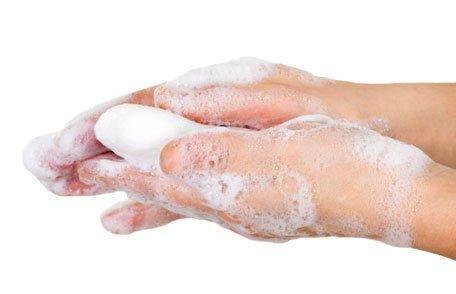Press Release
Wash your hands. How many times have we heard that oft-repeated refrain over our lifetimes? Since we were children, we’ve been encouraged to wash our hands after playing outside, before eating, after using the restroom and any one of a number of other occasions.
And not without reason. According to the Centers for Disease Control and Prevention, an estimated 80 percent of infectious diseases are transmitted by touch. And the simplest, most effective way that we can combat the spread of germs is via the same missive you’ve been most likely hearing your whole life – wash your hands.
It’s ok to ask
Clean hands are a great frontline defense against the spread of germs and serious infections. Proper hand hygiene is top of mind as we mark May 5 of this year as World Hand Hygiene Day, and it should be top of mind every other day, too. And there is perhaps no more important a place to be mindful of clean hands than inside the walls of the hospital. Proper hand hygiene in a healthcare setting should be top of mind for both patients and those visiting their room. Germs that can lead to serious infection can hitch a ride on the most unassuming of visitors, including the doctor and other healthcare workers, family, friends, your minister – really anyone who visits you while you are receiving care.
Healthcare workers and visitors should make it their priority to uphold good hand hygiene, making sure their hands are clean when they enter a room to visit a patient. And patients should feel that it is okay to ask every single person who visits their room to clean their hands for their own protection. If patients are not sure whether the visitor has cleaned his or her hands, they should feel comfortable and confident in asking their visitor to do so. So how do we ensure that we’re getting our hands properly clean?
Soap and water vs. hand sanitizer
In today’s market, we’re inundated with a variety of soaps and hand sanitizers, and we’re usually presented with both options in the healthcare setting. Both are effective in killing or removing germs on your hands, but it’s important to know not only when it’s appropriate to wash your hands with soap and water or when to use hand sanitizer, but the appropriate way to do each.
Simply put, if your hands look dirty, or you’re getting ready to eat or you’ve just used the restroom, you should wash your hands with soap and water. To hand wash appropriately, wet your hands, apply soap and rub hands together to make a good lather, then rub your hands together, applying friction, for at least 15 seconds. Make sure you scrub easy-to-forget areas like your fingertips, nails, thumbs and between your fingers.
Alcohol-based sanitizers are appropriate to use in other situations, when your hands do not look dirty. When you apply the hand sanitizer, it’s important to cover every part of your hands, just as you would do washing with soap and water, continuing to rub your hands together until they are dry.
Keeping hands clean is not only an effective defense against the spread of serious infection, it’s a very simple and easy thing to do that can make a big difference, especially in the healthcare setting where patients are at risk for infection. In fact, research shows that improving hand hygiene can lead to significant reduction in healthcare-associated infections – by up to 50 percent.
So, the next time you’re visiting a patient in the hospital, be sure to do them a favor and clean your hands for his or her protection. And let the patient know that your hands are clean for peace of mind. If you’re a patient, clean hands are just as important for you, too. And don’t be afraid to ask all of your visitors to clean their hands. Remember, it’s OK to ask.


